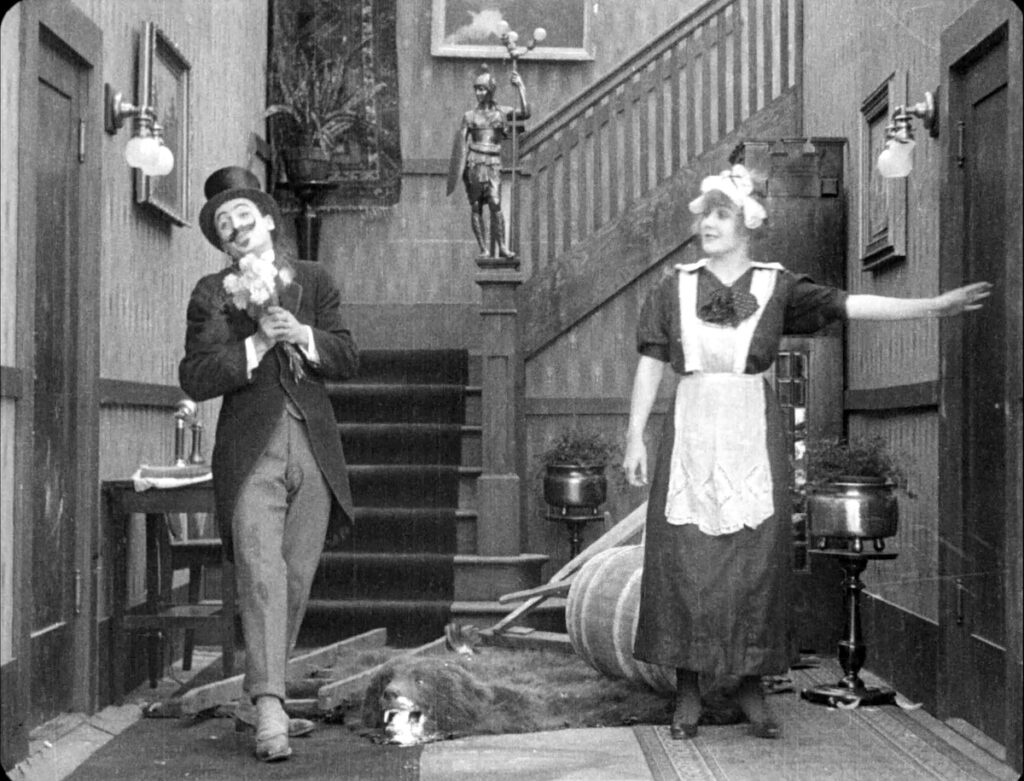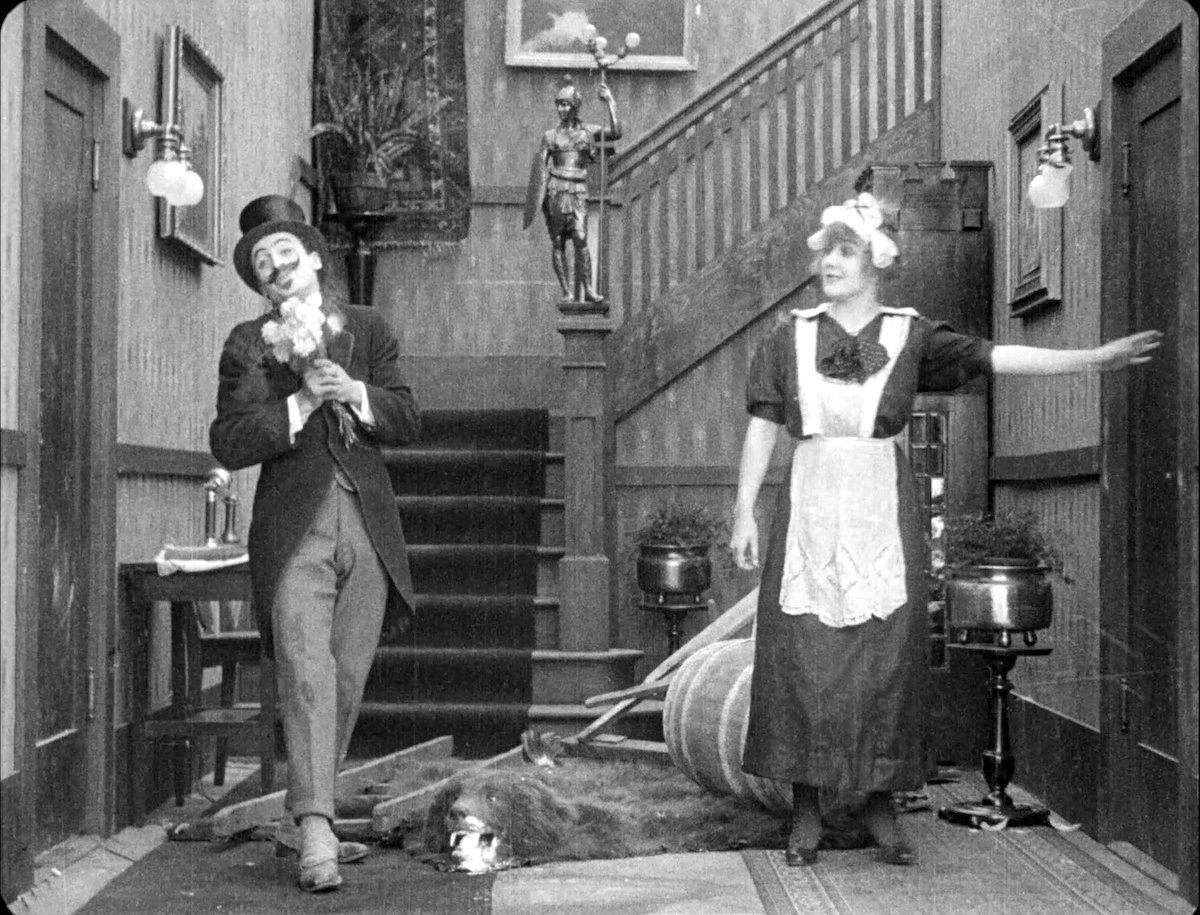This visual shorthand employed in Silent Film helps us know immediately what sort of behavior to expect of the person we see on screen. It invites us to make assumptions about their needs or wants or fears etc, and assumes we all have a shared expectation of a character who has a certain look or way of moving or dressing. This is the right-brain part of this short-hand that’s employed by Silent Film’s storytelling language.
It’s not just stage traditions, or Halloween or child’s-play dress-up that rely on this. It’s in society and in social interactions. Uniforms of different types continue to do this, even today when an effort is being made on many people to move away from the stereotyping or “profiling” of “you look like ____ so I expect that you are/will ____”.
The ethnic stereotyping we see in silent movies is of its time, being a cultural artifact or marker, and is not part of the language of Silent Film itself. It’s a component of the way the language was used in the ‘teens and ‘twenties, especially in comedies, but belongs to the time. Because it was part of a set of shared expectations or behavioral assumptions that was — for better or worse — common or rampant at the time.

They’re often uncomfortable to view through today’s eyes and mind-sets, and will continue to be, of course. But at the time these films were made this was part of the known cultural lexicon, and were used occasionally in silent movies as part of this storytelling shorthand.
This particular usage is specific to silent movies made during the silent era, but is not essential to Silent Film language itself. At the end of this blog series, whenever we get there, I will have a section on silent films made since the talkie transition as well as some thoughts on making Silent Film today.
The first post in this series is here.
The previous post (#34) to this one is here.
The next post (#36) is here.

Watched most of GIRL SHY on TCM March 7, and having read your blogs, I was paying attention to all the silent film cues you have pointed out, especially “sounds.”